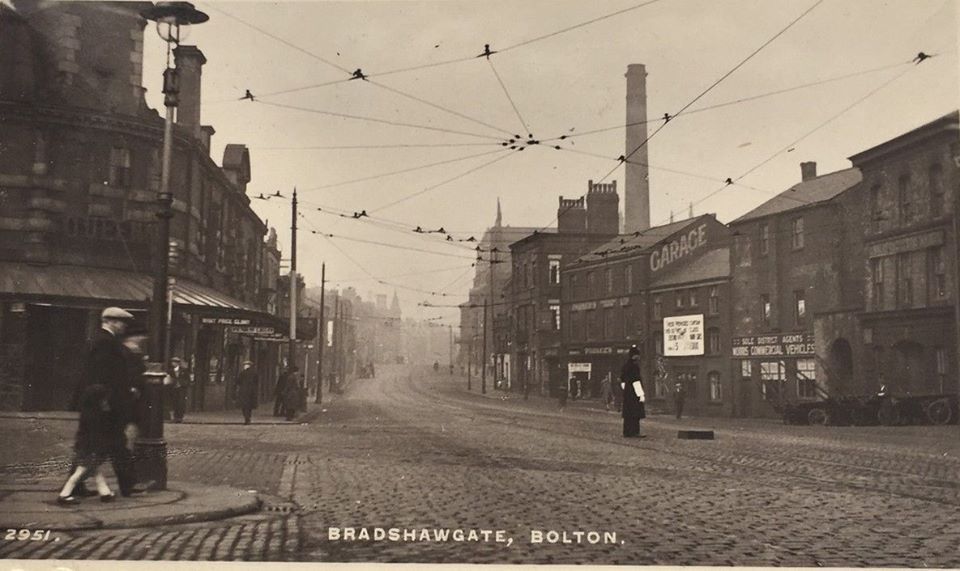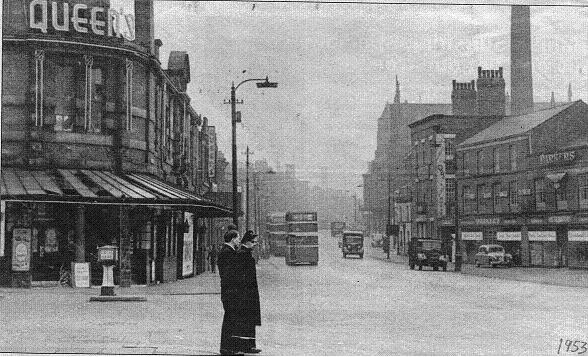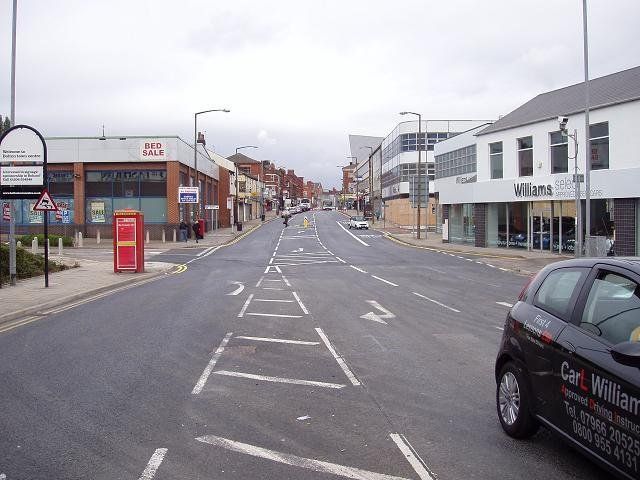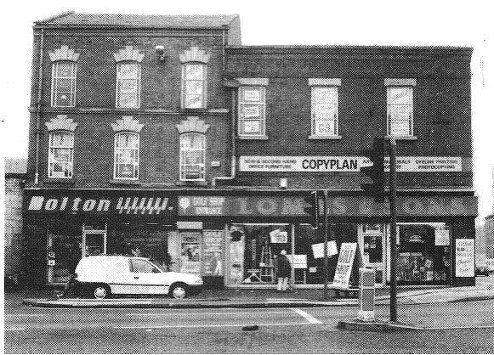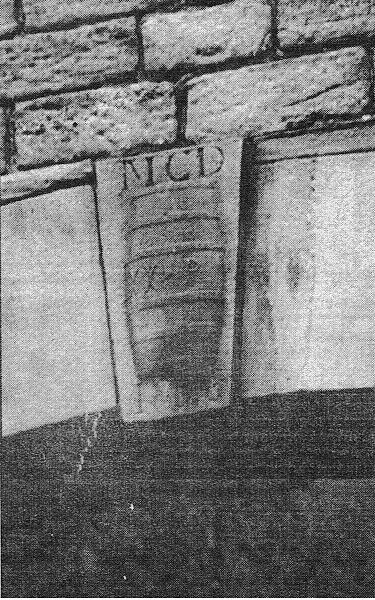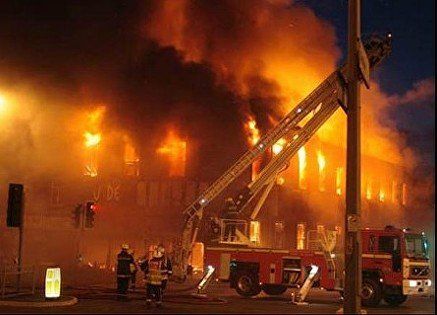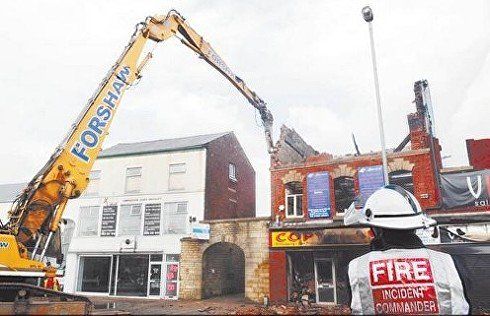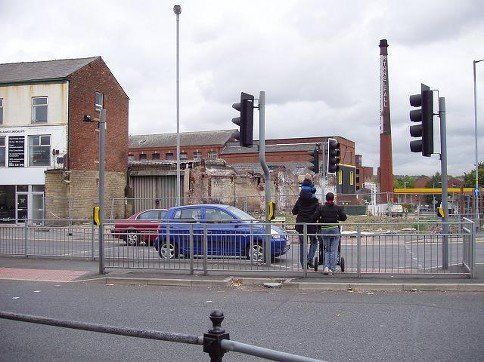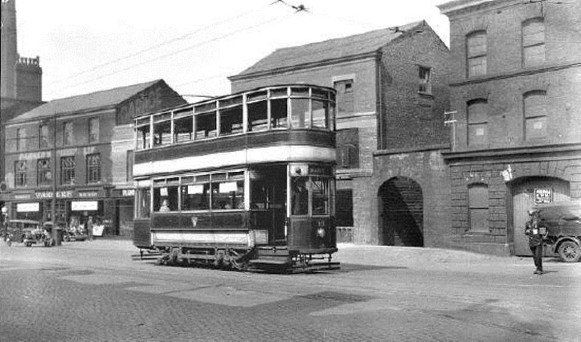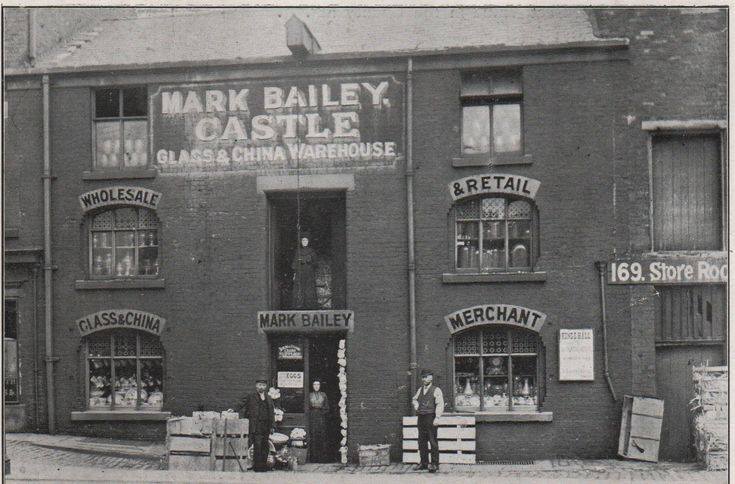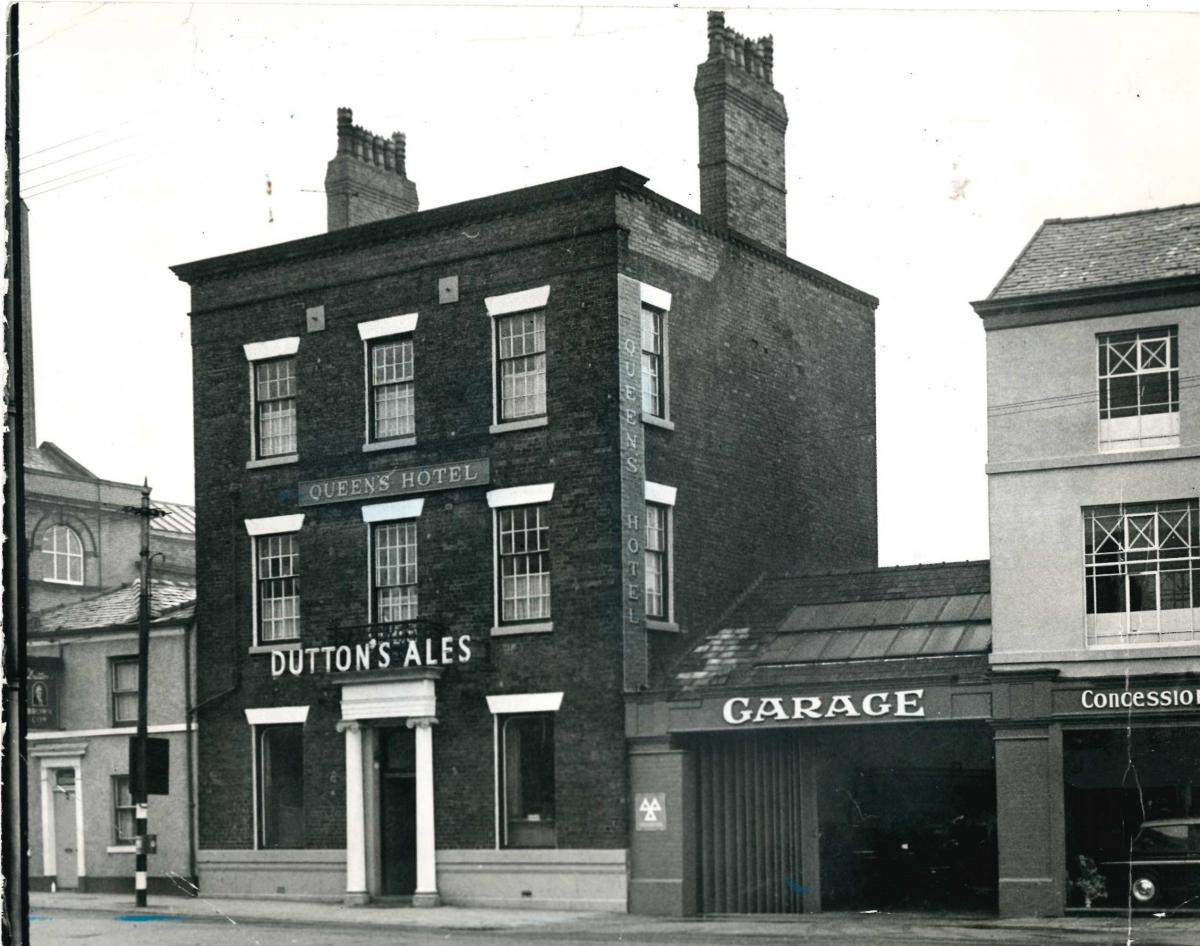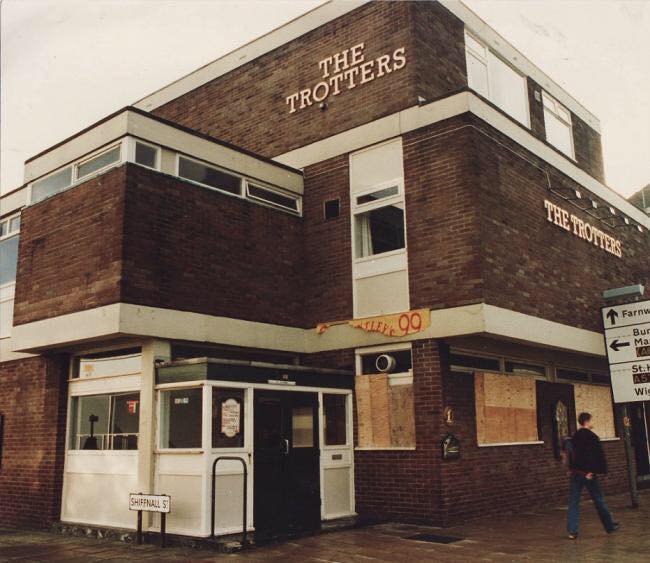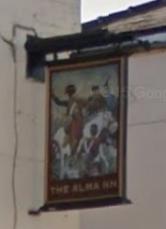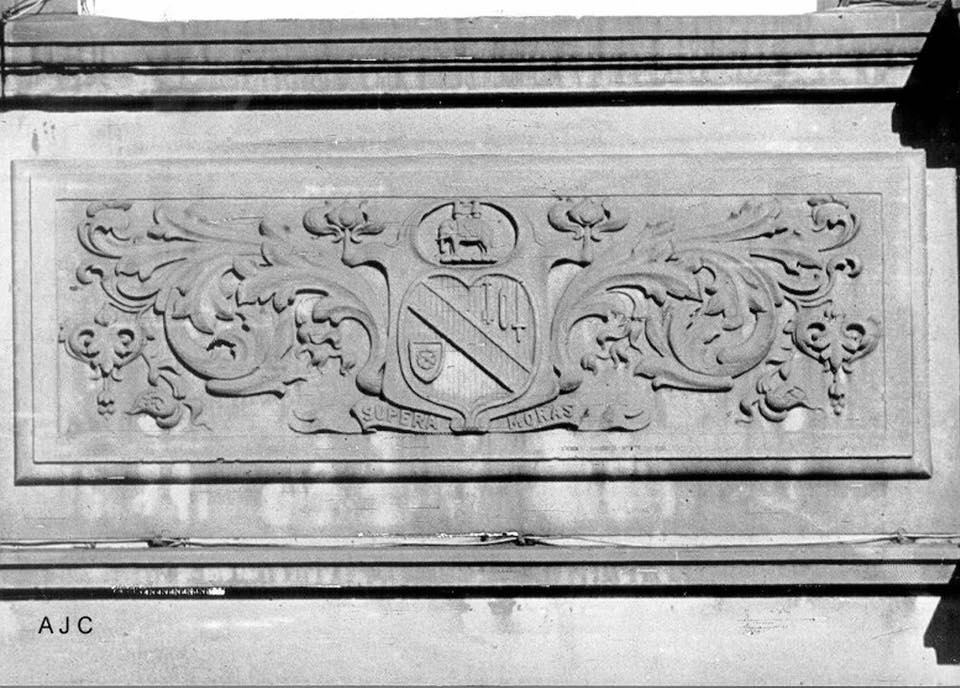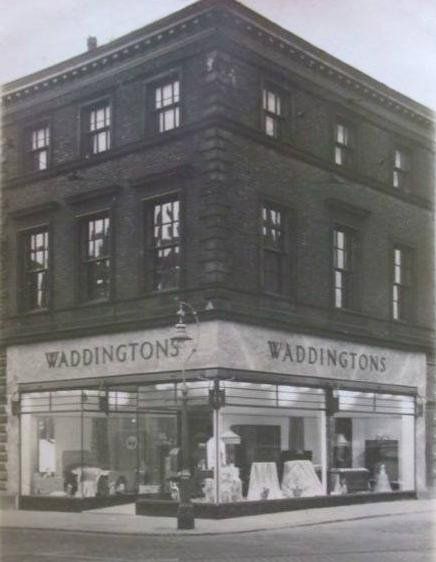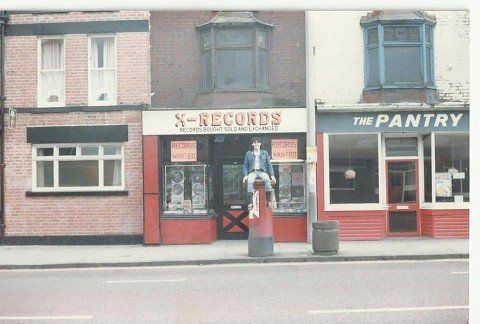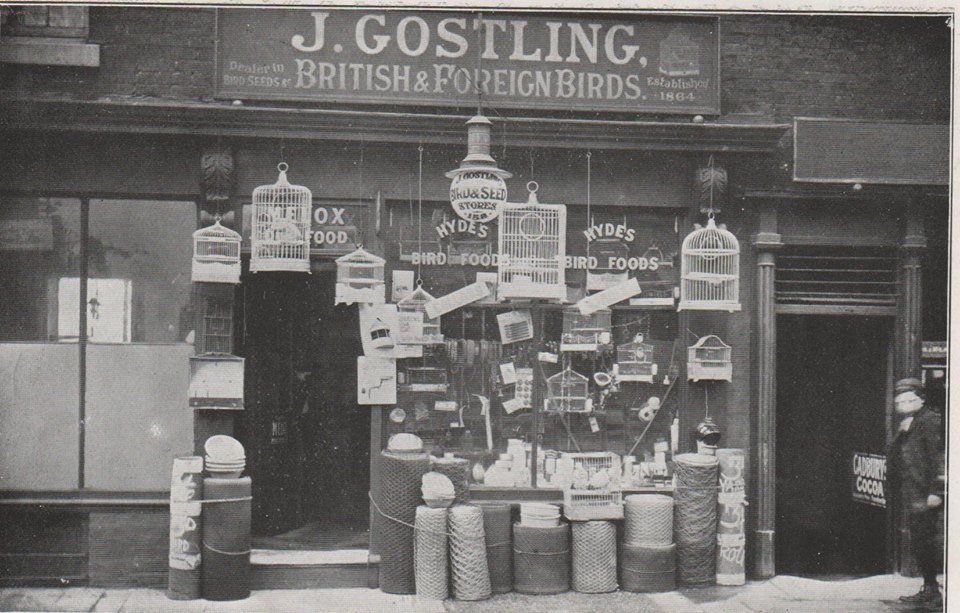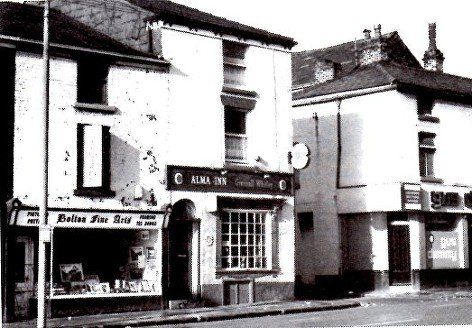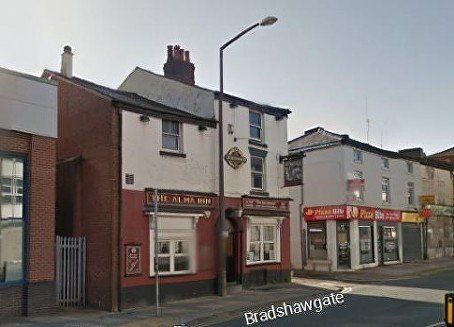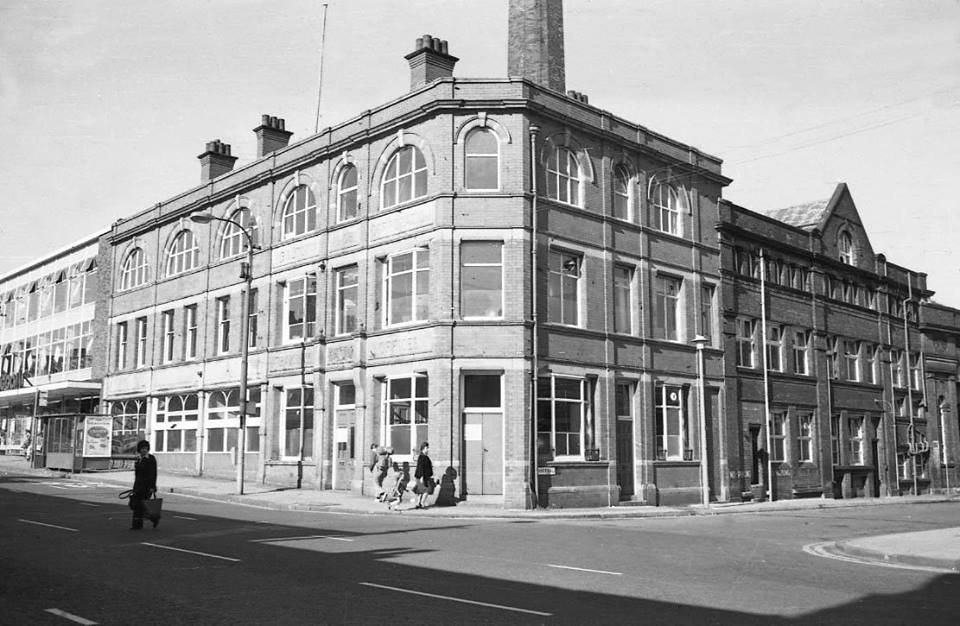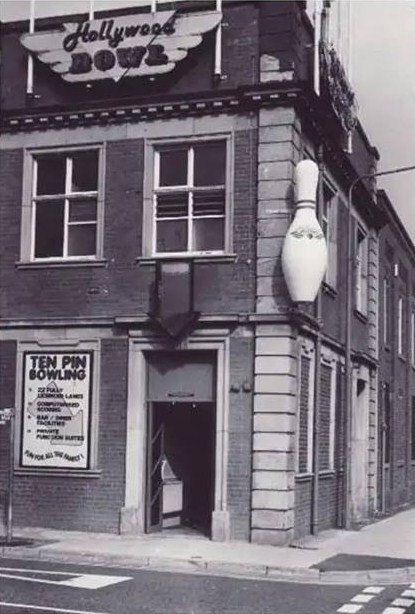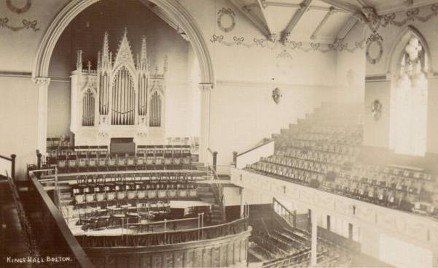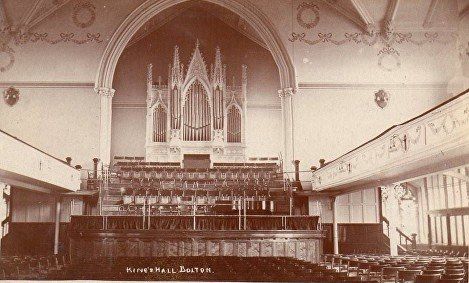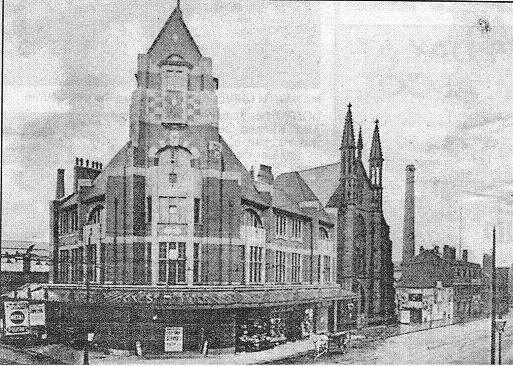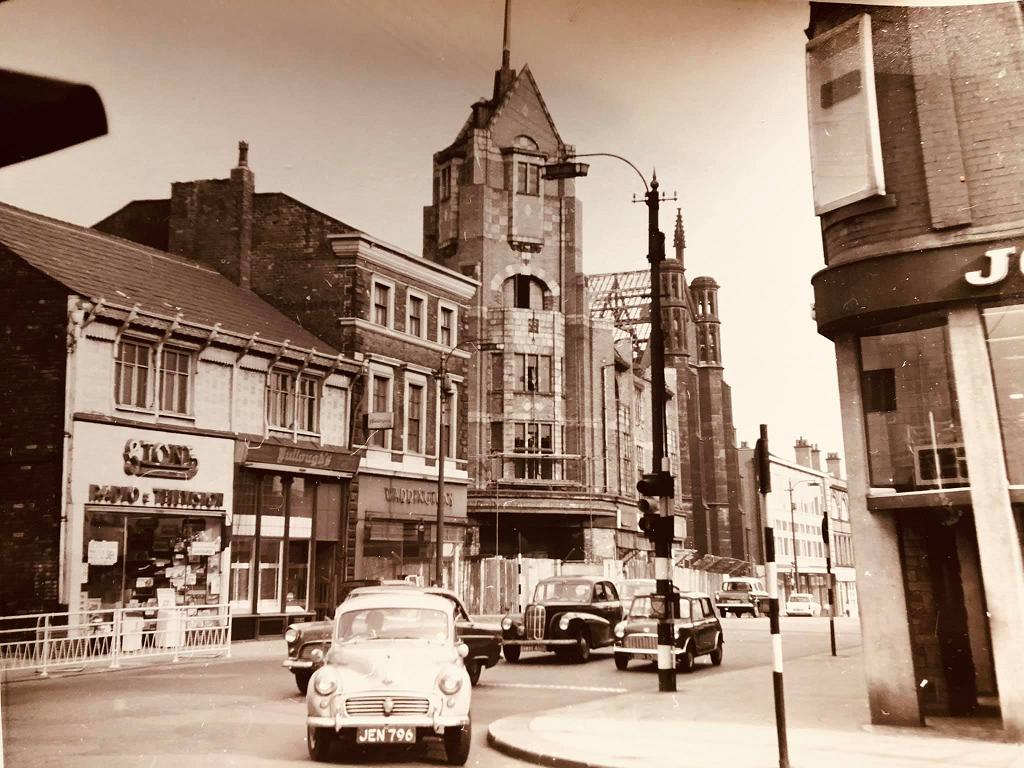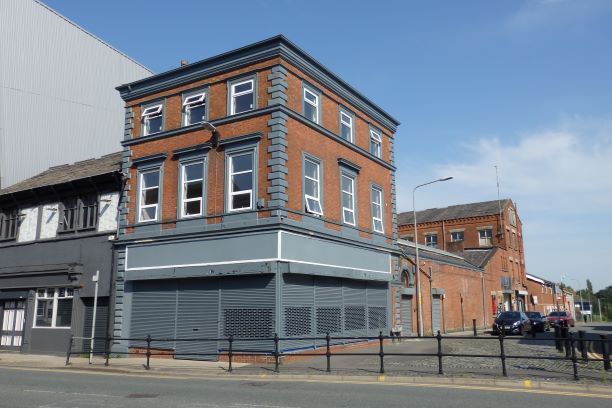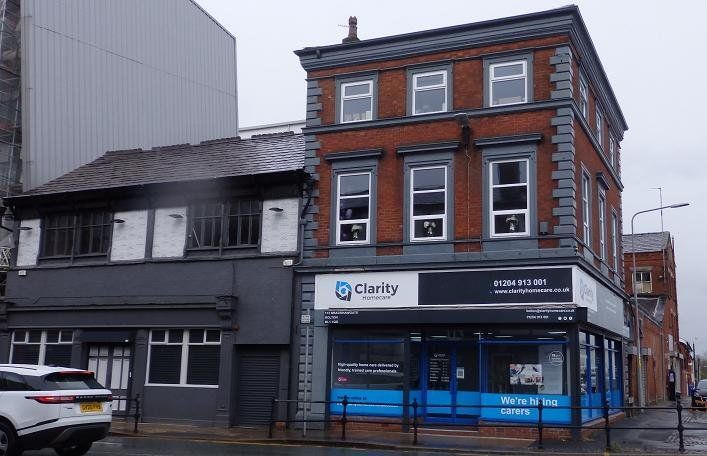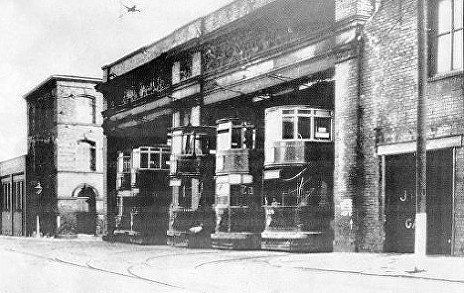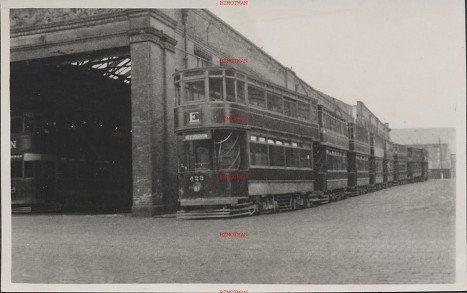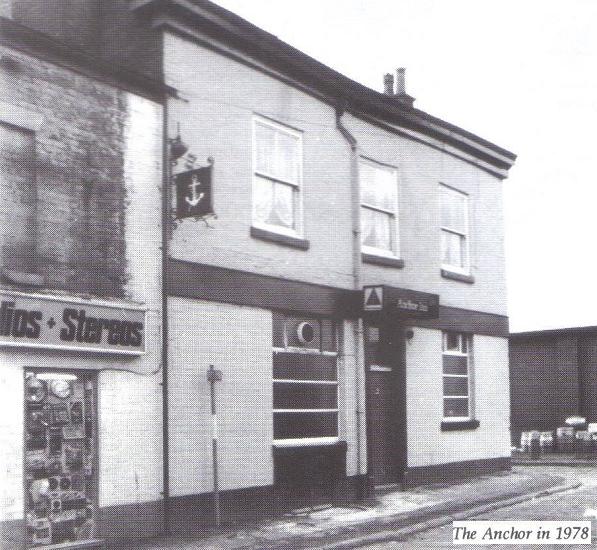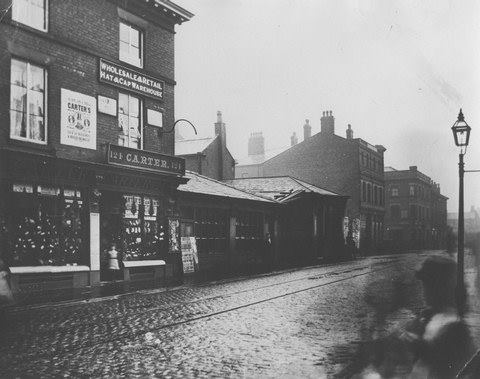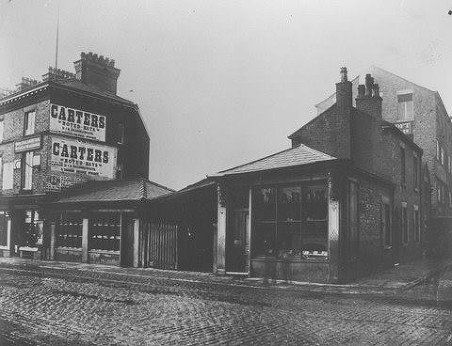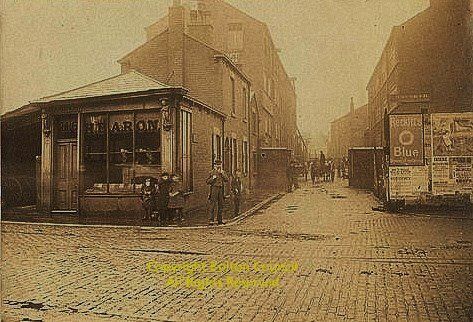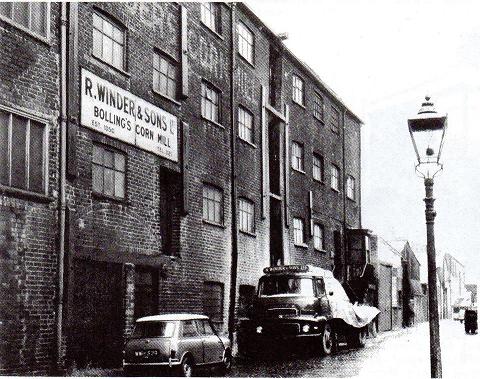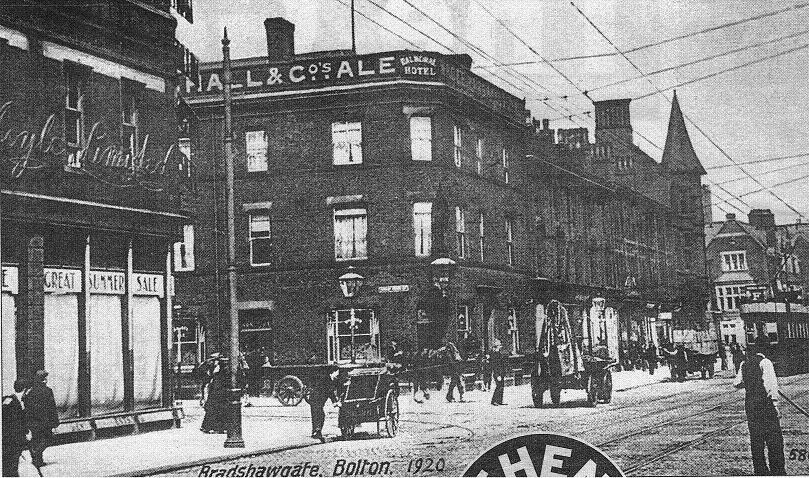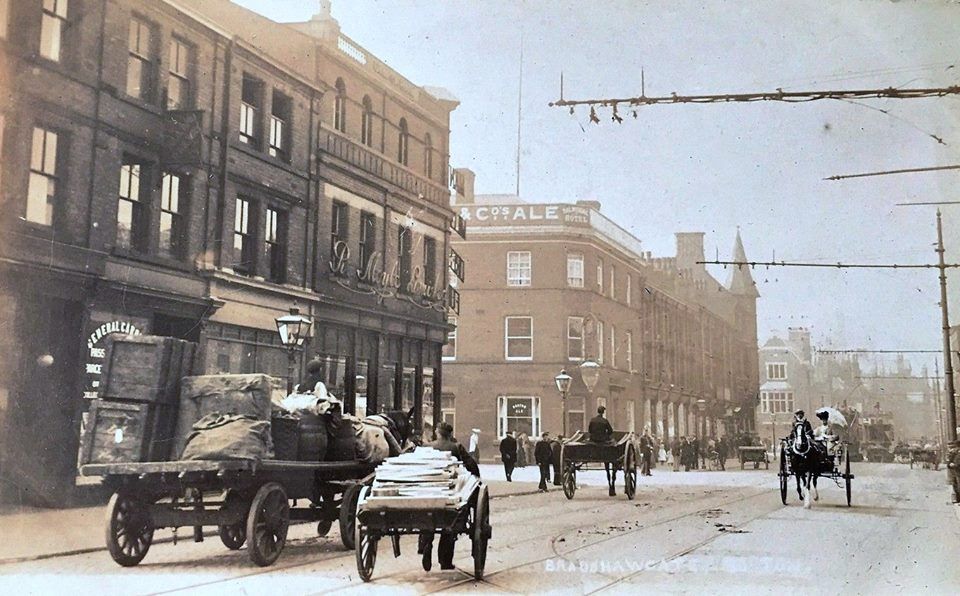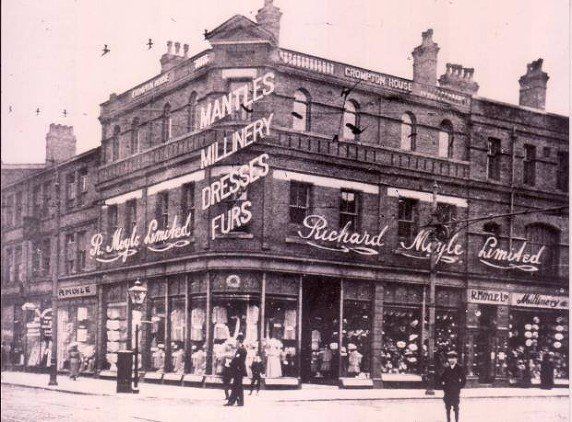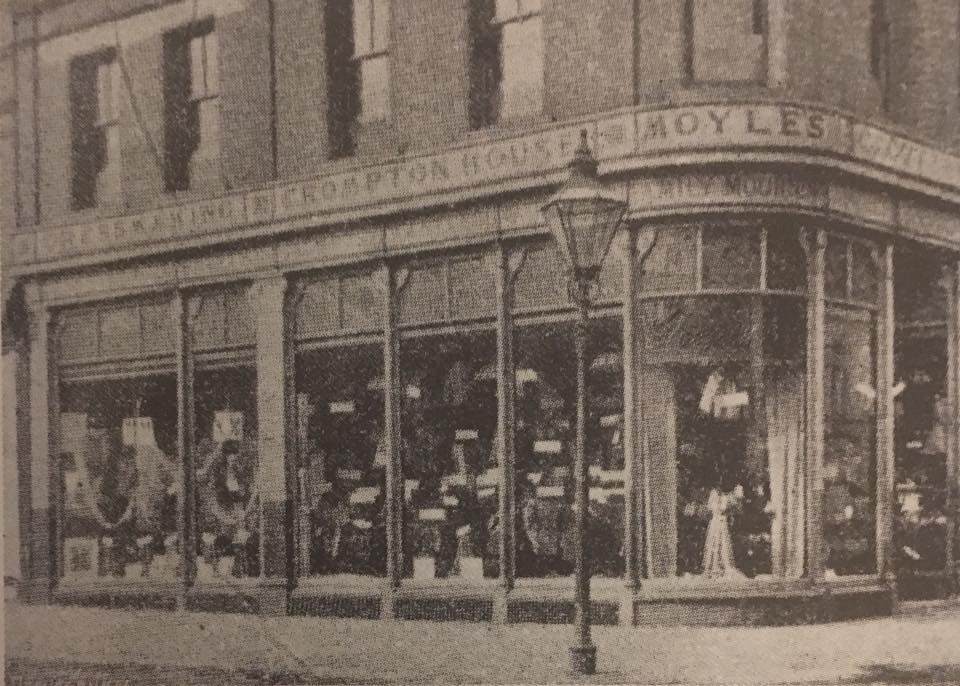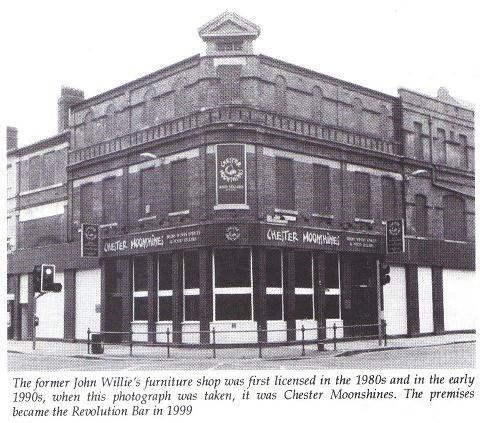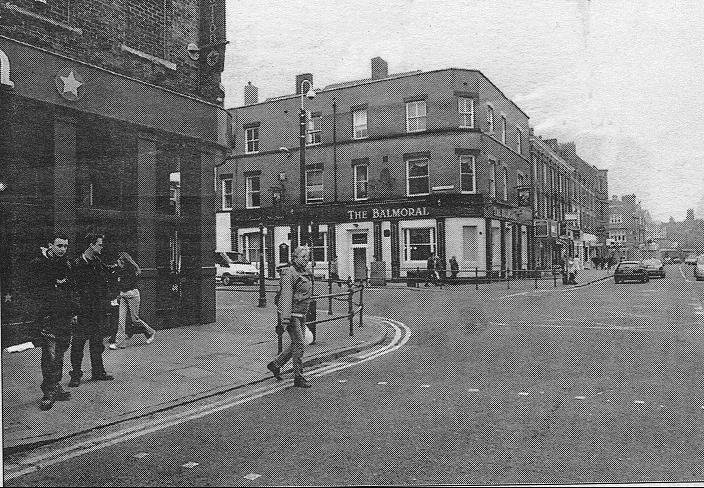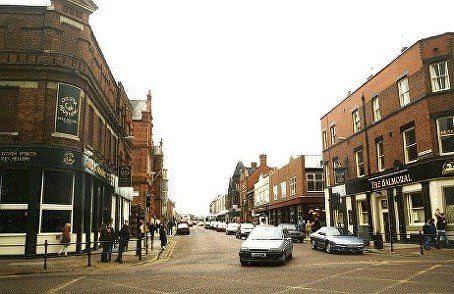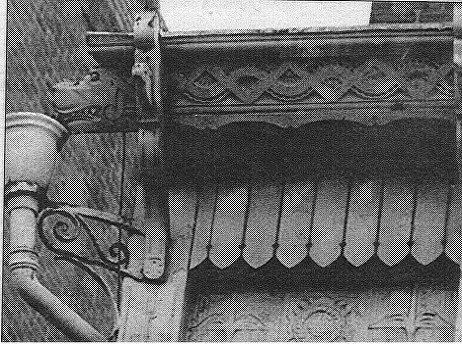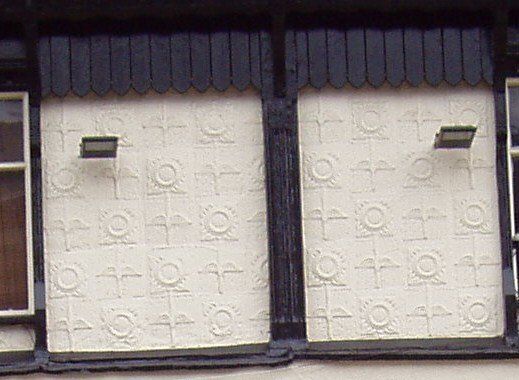9 Bradshawgate
Late 1920s
A postcard from David Whenlock's collection. A view along Bradshawgate from its junction with Trinity Street.
The name QUEENS is lower down and less visible than later. The film on show is "What Price Glory" released in 1926. In the distance the Prudential building sports its conical roof. On the right, the Kings Hall, the Brown Cow and the Queen's Hotel. The chimney of the Transport Department towers over the scene. This was later shortened. Parker's Garage and Commercial vehicle depot. The arch led to a brewery (more later) and the carts look like they may be for the transport of beer barrels. The nearest building appears to be the one which survived along with the arch until the fire pictured later.
1953
The Queen’s Cinema opened 2 December 1912, closed June 1966 then opened as a bingo hall in August 1969. It showed films again for a short time in 1970, then showed Asian films until its final closure in 1979. It was demolished in January 1981.
On right, the huge size of the Kings Hall and Chapel are obvious and slightly closer we can see the Brown Cow pub and the much larger Queen’s Hotel (with OBJ).
The cinema is already showing signs of neglect. Notice the QUEEN'S is higher than on the previous picture.
Parker's Garage occupies both buildings this side of the Queen's Hotel.
September 2009 from almost the same spot.
Everything has changed.On the right we see the modern car show rooms, In the distance an old building which is now Cash Generator and the apartment building called the Picturehouse which replaced the LIDO cinema. On the right is a bed shop which becames JD Sports beyond which are older buildings including the Alma public house which are not too much changed.
1997? As we turn from Trinity Street into Bradshawgate, the first building on the right, on the corner of Bridgeman Place was part of Pelso Mill for many years occupied by Lomas's Copyplan and Golf Shop.
left: A little later than the previous picture of this building, Lomas have now moved into the whole block and the premises labelled Bolton have moved nest door and become Elliotts. Between the two buildings is a stone arch. The arch survived the fire but sadly was demolished when the site was cleared afterwards. In earlier days a brewery existed behind here, as indicated by the keystone in the arch which features a barrel labelled MCD 1826
Pictures from the Bolton News Fri 25 July 2008
It is reported that a fire started around 2.50am on Thursday. The building was totally destroyed and was demolished and cleared soon afterwards. It was believed to be an arson attack. The owner said, “We have had the building since 1993. Copyplan is a family business. It was started by my father in 1969.” Some people might remember Copyplan in Mawdesley Street before it came to Bradshawgate.
The archway that once led to a brewery has survived the fire.
c1895 Picture posted on Facebook by Denis McCann.
The taller building at right is the building the brewery arch at the front of the above tram.
In the picture below the building is numbered 159 and 161 which on the tram picture is Parkers at the rear of the tram. So Mark Bailey's Castle Warehouse must precede the building at the back of the tram.
But why the uphill bit of pavement?
Predates Parker's Garages
The Wesley Chapel
The Transport Offices
Shiffnal Street
The Brown Cow
The Queen's Hotel
Gratrix's Complete House Furnishers.
Immediately to the left of the main building of Parkers Garage (the white building on the extreme right of the picture) is a single storey entrance to the garage workshop then the imposing Queens Hotel. It is likely that the Queens Cinema took its name from the hotel.
The tiny building to its left is the Brown Cow pub.
On the extreme left is the Shiffnal Street side of the Transport Offices.
On the left hand side as we go towards Preston's corner is the Clarence Hotel on the corner of 176 Bradshawgate and Byng St, built 1844 demolished early 1990s.
Discovery is now X-RECORDS. Sitting on the pillarbox is the owner of this picture, Julie Vanion.
158 Bradshawgate
J. Gostling established 1864, importer of goldfish and canaries, talking parrots always in stock, another branch under the gallery of the Market Hall.
Posted on Facebook by Gene Watts
Bolton Fine Arts at no 154 and The Alma Inn at 152 Bradshawgate c1970.
At this time the Alma has a single frontage, and no picture sign.
Gus Demmy betting shop to the right.
More recent picture of the Alma from Google Streetview. Now double fronted and has a pictorial sign commemorating the battle of Alma.
Back to the right hand side of Bradshawgate (as we travel towards Preston's). The palatial Transport Offices on the corner of Shiffnall Street.
Picture from David Whenlock's collection
plaque over the door.
Down Shiffnall Street, corner of Carlton Street.
Above: Wesley Chapel, Bradshawgate, from the collection of DavidWhenlock
Right: Interior of the Wesley Chapel
1907 Bradshawgate, Breightmet Street.
The King’s Hall, an absolutely massive place, a Methodist mission and hall opened after the Victoria Hall had proved to be a success. It opened in February 1907 having been built alongside Bradshawgate Wesley Chapel. It closed 22 Jun 1958 but was not demolished until 1964.
1964 Bradshawgate from the corner of Great Moor Street. picture posted on Facebook by Philip Shuttleworth
Demoliton of King's Hall and Wesley Chapel.
On the near side of Breightmet Street is Waddington's - the building is still there and has recently been Cash Generator
Then an attractively detailed pair of - probably houses when built. There is well-carved woodwork at the line of the gutter with a dog's head at each end and impressed designs on the plaster. The building and the features remain though slightly marred by many layers of paint.
That building is occupied by Stones, Radio and Television and Bullough's what looks like a baker's shop - and did later become Cheadle's bakers.
On the right, on the corner of GMS is John Willie's furnishers.
Bradshawgate / Breightmet Street Waddington’s
. A good Victorian building looking unnecessarily dour with years of smoke and a black and white photograph perhaps taken towards evening - with a tasteful early 20th century shop front.
Waddington's have been on this corner since 1835 (Denis McCann)
September 2020 (C)WDC
Tidied up and looked after - but what is this renovation intended for?
May 2021
Picture posted on Facebook by Edward Thompson
Breightmet Street tram sheds
BZMOTMAN copyright picture
Breightmet Street tram sheds
Back across to the Gt Moor St side of Bradshawgate. There are a number of little streets probably somewhat longer until the railway came. To the left is Lomax's Buildings, to the right is Bolling's Yard, and this little street is Union Buildings with the Anchor Inn.
A recent shot of that building from Google StreetView. A building totally ruined by the late 20th century shop front.
We are looking along Bradshawgate towards Preston's corner. On the left we have Moyles (John Willie's, Revolution) and the Balmoral Hotel either side of Great Moor Street then the Prudential Building and the Pack Horse in the distance.
On our left as we continue our journey, Carters Hat Shop on Bradshawgate.
To the left of the lamppost is the junction of Bradshawgate with Great Moor Street. The buildings on both corners are still standing, Crompton House closer to us and the Balmoral Hotel beyond Great Moor Street. Somewhat later that this picture people will remember in the low buildings a newsagent and the Bolton Model Shop. The low buildings are lightweight constructions on the railway bridge over the railway from the station and the Triangle going up to Tonge Moor and Blackburn.
Bollings Yard is between the low buildings and the three storey Crompton House.
Crompton House and the Balmoral Hotel either side of Great Moor Street.
Picture posted on Facebook by Peter Lodge.
Bradshawgate looking back to Carter’s. Bollins Yard on the right into the picture.
1881 Copyright Bolton Council
Looking up Bollings Yard with Bolling's Corn Mill on the left.
The street is still there. About 50 metres along, the County Grammar School (now School Rooms apartments) would later be constructed on the right.
Bollings Corn Mill. Posted on Facebook by Gene Watts
1920 Bolton News picture.
Just a few yards further from Bolling's Yard and we reach the corner of Bradshawgate and Great Moor Street.
The Balmoral has changed only slightly since this picture, at the far end of the block is the Prudential Building with its witch's hat, then the rebuilt Pack Horse. On the left is Richard Moyles outfitters. This building was known as Crompton House.
Find a paragraph about life in the Moyles at the bottom of the page.
A busy scene on Bradshawgate. The man pulling the cart seems to be overtaking the horse and cart. Towards the right of the picture, coming towards us is a pony and trap carrying a well dressed lady with a parasol.
Missing from the scene is a young lad with a brush and shovel gathering up the manure for the rose bushes and rhubarb.
Picture from David Whenlock's collection.
One of Bolton's best known fashion shops for more than 80 years was Richard Moyle Limited based in Crompton House in Bradshawgate. The shop closed down in 1960 with the roomy premises and extensive workrooms on the upper floors sold to another firm, John Willie (Furnishers) Ltd.
"Crompton House" is clear over the upper storey windows. The balustrade was later removed which had a suprisingly deleterious effect on the appearance of the building.
This store, on the corner of Great Moor Street and Bradshawgate had, at one time, more than 60 employees including shop assistants, dressmakers and milliners. It looks a fine store judging by the incredible window displays and large notices advertising furs, dresses and mantles. There appear to be hats in one window as well as dresses and what looks to be children's outfits in another.
Sadly we do not know the date of this photograph. (Bolton News)
The large script writing is not attached to the walls at the time of this picture.
Sadly no pictures of this corner while it was John Willie's furnishers which many people will remember. Here it is in a later role as Chester Moonshines.
That building really needs that balustrade.
2003 a more recent view of the corner.
Moyles, John Willies is now revolution
The Balmoral has had its wall rebricked.
A quick look up Great Moor Street before we continue our journey along Bradshawgate. Building on the left corner now Chester Moonshine.
The Salvation Army Citadel with Lanzetter's jewellers and Skelton's sewing machines has gone and Gregory and Porritt's have extended into that spae.
More about Great Moor Street on a later page.
As you approach the junction of Bradshawgate with Great Moor Street, on the right between what has been Cash Generator and the flats which have replaced the Lido is a fairly old premises. This was Cheadle’s pie and cake shop, in the early-mid 20th century, on a picture above you saw it as Stones TV and radio. More recently it has been Muldoon’s Bar, Durty Gurty’s and then DG Bar. It underwent renovation in 2020 but did not seem to be in use in May 2021. It is worth noting the plaster patterning, not common round here, but common an Suffolk where it is called pargetting remains intact. Carved guttering supports are also still preserved.
The picture at left was published in the Bolton Evening News and clearly shows a dog's head (there is another one at the right hand end of the gutter). Note a smaller dog facing forward, the carving all along the soffit and the plaster patterns.
The large dogs and the carving are still there in May 2021 though the details have been slightly obscured by layers of paint. The smaller dog seems to have disappeared.
The next page looks at the LIDO in this junction then takes us along Bradshawgate to Nelson Square.
Customers always came first at women's fashion shop Moyle's Write-up from Bolton News Looking Back
MANY of our readers have fond memories of shopping at Richard Moyle Limited in Bolton. Others have contacted us about their enjoyable days working for the firm. But today we have a fascinating account by one Bolton resident, Michael Turner; whose father ran the family-owned exclusive women's clothing and accessories store.
Michael's father; George Henry Brown Turner (known affectionately as Harry) came to work for his uncle by marriage, Richard Moyle, in Bolton. George's parents ran Turner Brothers' shoe shop in Preston, where they did not only sell shoes they made them as well, but George was enticed to Bolton and "absolutely loved" his work, says his 87-year-old Son.
Richard Moyle had married Michael's grandmother's sister —Julia Brown — and although they had a business in Liverpool they saw great potential in Bolton in the late 19th century.
The town was an up-and-coming shopping venue and seemed the ideal location for a top class dress and clothing store for discerning women. It would not be an ordinary store, for at Moyle's the customer always came first and their needs were of primary concern.
Michael's father went to work for his uncle in around 1895 at a time when Britain was still to stiffer from the horrors of World War One. The store was created from a former home. The two houses would he developed into a fine building; with an imposing mahogany staircase. It would become Crompton House in 1879 and was situated on the corner of Great Moor Street and Bradshawgate -- today it is a disused public house.
Richard Moyle's title was mantle maker; referring to the coats he manufactured and sold. Richard and Iris wife, Julia, lived in a large Victorian house called Willow Bank overlooking Lostock Junction Station. The property and grounds have long since disappeared to make way for a housing development.
Richard Moyle Limited became, says Michael, one of the "best known furriers, costumiers, milliners and fashion stores in the town". The hosiery, knitwear, millinery and lingerie departments were on the ground floor along with a glass-sided cash desk. The fancy staircase led to the first floor where the dress and coat showrooms were housed and a second staircase in the private part of the building led to the offices and director's dining room.
When Richard Moyle died in 1916 his nephew took over the running of the business.
During the 1930s the company employed a manager, two office staff, 30 sales women, four alteration hands, two cleaners, two porters and a cook. Michael said: "The shop opened at 9am so staff were expected to be behind their counters by 8.45 am. Closing times were 7pm on Mondays, 8pm on Tuesdays and Thursdays and on Friday and Saturdays 9pm or whenever the last customer decided to leave. Wednesdays were half days until 1.30pm."
Staff members were loyal and many had a long record of service. 'There were two Miss Staveleys who had managed 40 years each before their retirement in the late 1950s. Mary, who was the elder sister, supervised the coat and suit alterations in the workroom. She had her hair pinned into a bun her figure disguised by an ankle-length black gown. "A tape measure was usually draped around her neck and sometimes she would be seen wearing gaiters," he says.
As buyer for the lingerie department Nellie Staveley had some odd ideas, says Michael. "Her stock had to be both practical and hard wearing. She had no time for frivolities "with bits of lace showing more than was wise".
Phyllis Parker had served the company long and well. She was the milliner who occupied one of the workrooms upstairs. Perhaps the most honoured member of staff was the buyer for the knitwear department, Mrs Gownlock. Michel said: "She had the privilege of having tea with my parents in the directors, dining room and usually prolonged her break by playing Ludo with them afterwards."
Edwin Roberts was the store manager. He came to Moyle's in the early 1900s From Affleck and Brown's Ltd in Manchester "He wore steel-rimmed, pebble glasses. He was good at his job which entailed staff supervision, buying for the coat department and the fur department and bookkeeping," explains Michael.
There would be three or four occasions a year when the directors' meetings were held in the plain office on the first floor.

